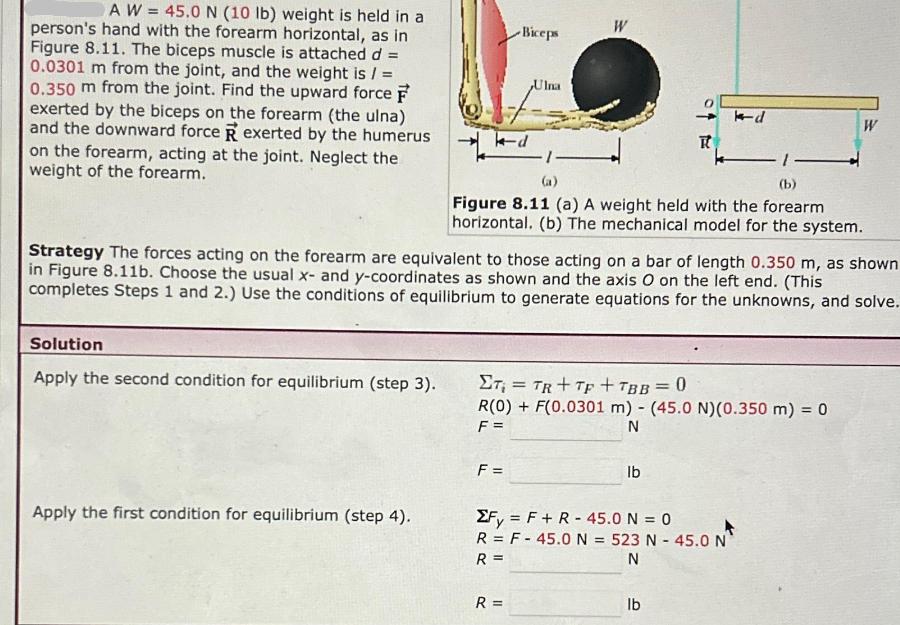Answered step by step
Verified Expert Solution
Question
1 Approved Answer
AW 45.0 N (10 lb) weight is held in a person's hand with the forearm horizontal, as in Figure 8.11. The biceps muscle is

AW 45.0 N (10 lb) weight is held in a person's hand with the forearm horizontal, as in Figure 8.11. The biceps muscle is attached d = 0.0301 m from the joint, and the weight is / = 0.350 m from the joint. Find the upward force F exerted by the biceps on the forearm (the ulna) and the downward force R exerted by the humerus on the forearm, acting at the joint. Neglect the weight of the forearm. Solution Apply the second condition for equilibrium (step 3). Apply the first condition for equilibrium (step 4). Biceps Ulna F = Strategy The forces acting on the forearm are equivalent to those acting on a bar of length 0.350 m, as shown in Figure 8.11b. Choose the usual x- and y-coordinates as shown and the axis O on the left end. (This completes Steps 1 and 2.) Use the conditions of equilibrium to generate equations for the unknowns, and solve. -1-1 (b) Figure 8.11 (a) A weight held with the forearm horizontal. (b) The mechanical model for the system. R= K ET = TR+TP+TBB = 0 R(0)+ F(0.0301 m) - (45.0 N)(0.350 m) = 0 F = N lb kd Fy=F+ R - 45.0 N = 0 R = F - 45.0 N = 523 N - 45.0 N R = N lb W
Step by Step Solution
There are 3 Steps involved in it
Step: 1
Variables and Formulas The forces acting on the forearm are the downward force ...
Get Instant Access to Expert-Tailored Solutions
See step-by-step solutions with expert insights and AI powered tools for academic success
Step: 2

Step: 3

Ace Your Homework with AI
Get the answers you need in no time with our AI-driven, step-by-step assistance
Get Started


